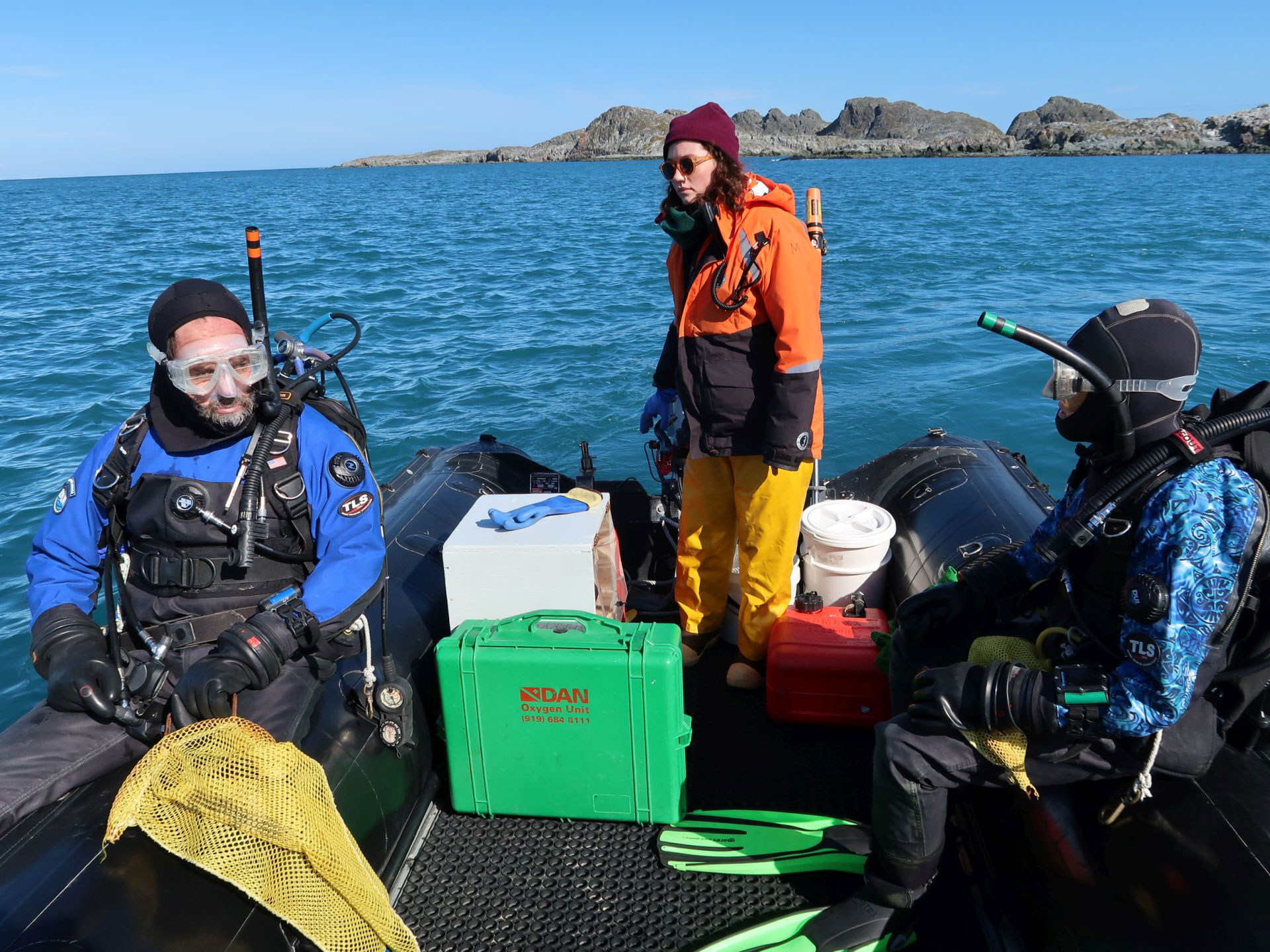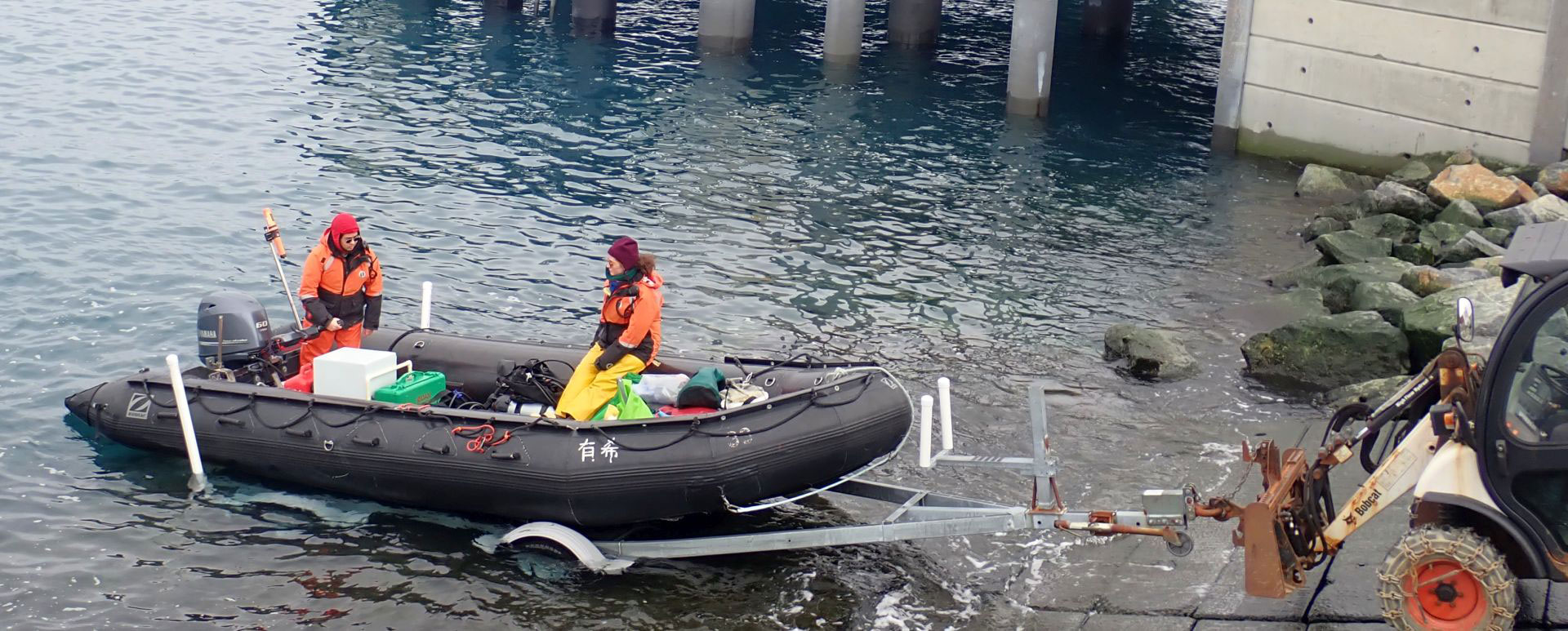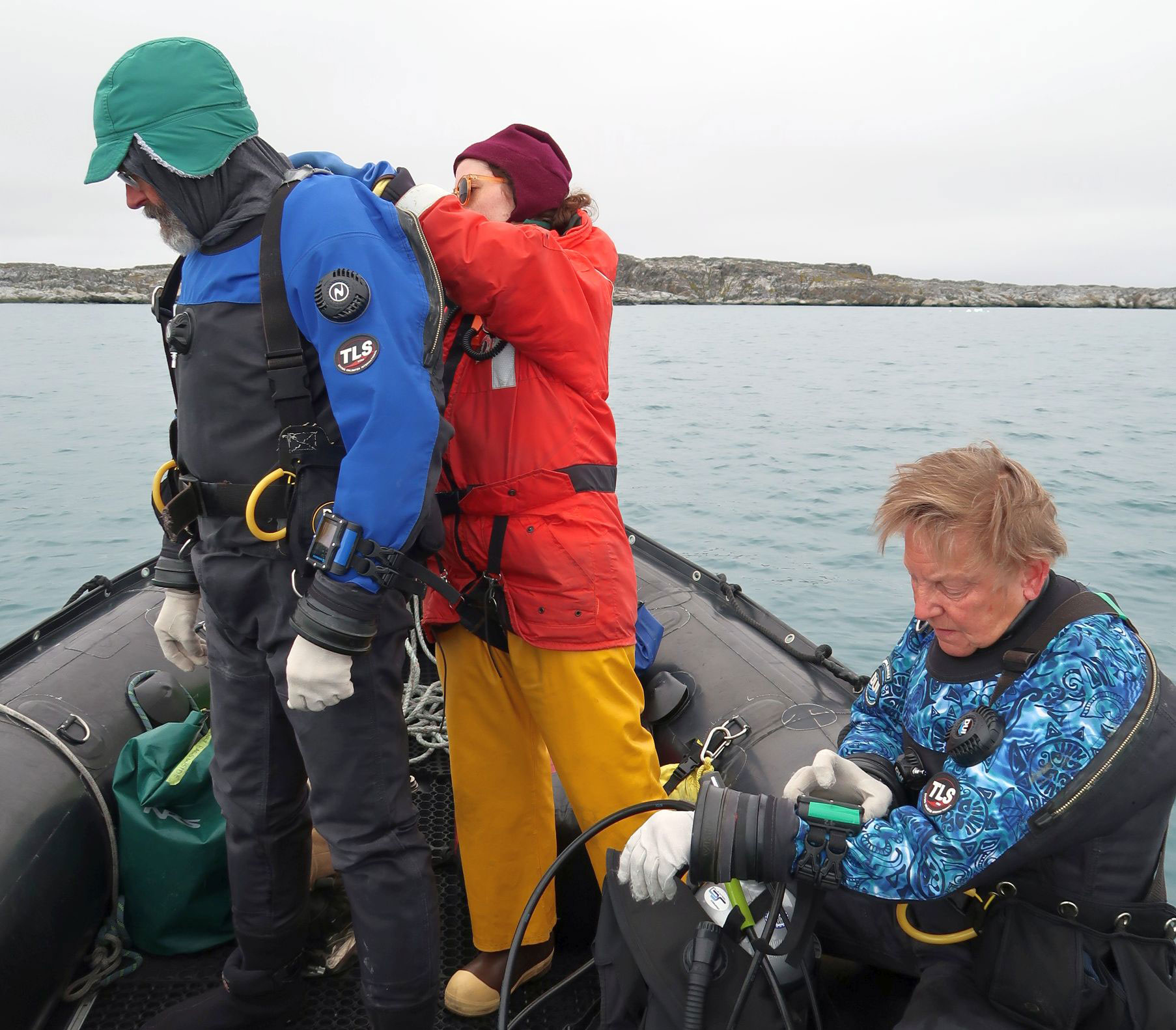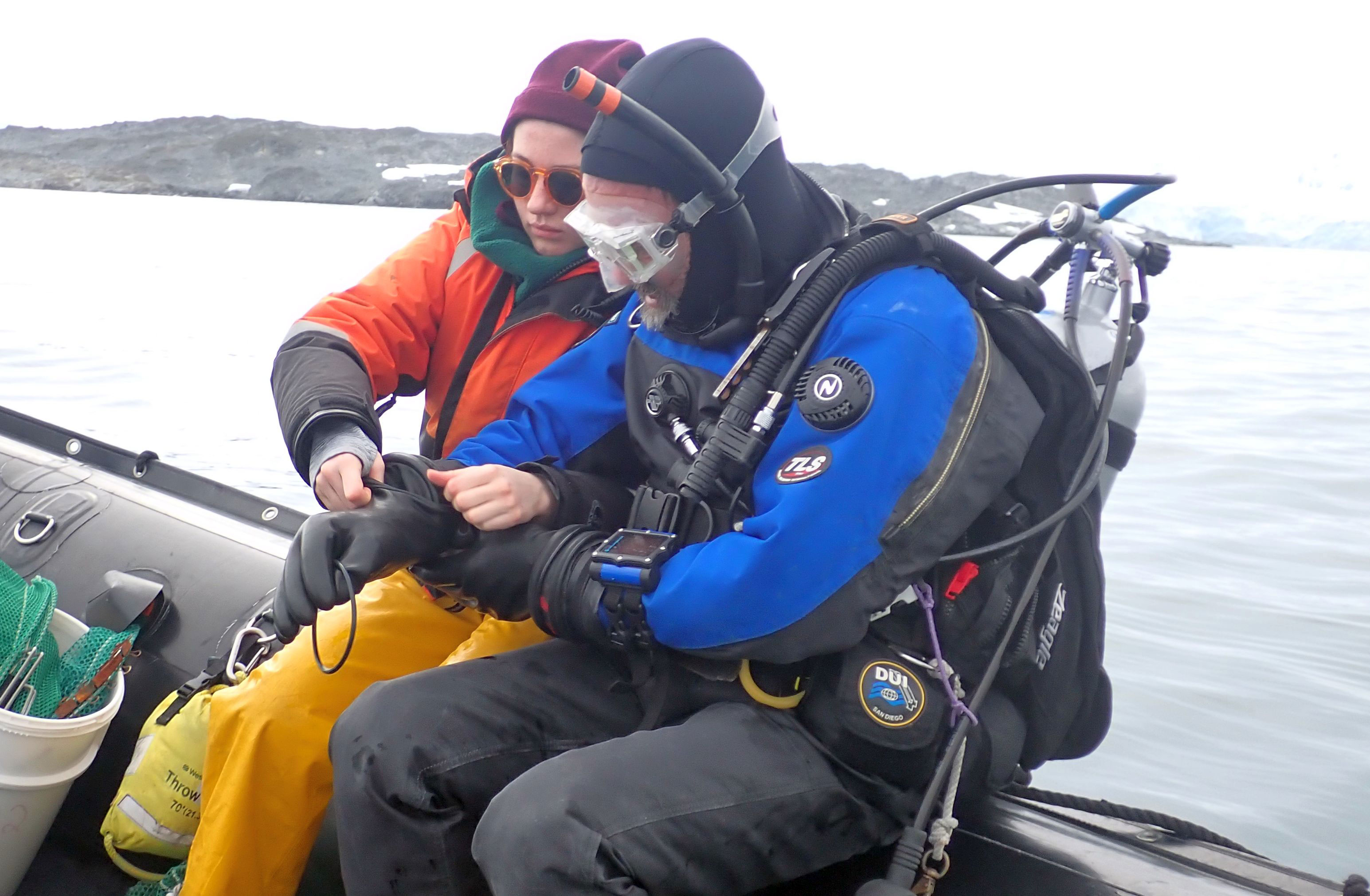 As you’ve read in other posts, we wear a lot of stuff when diving. A lot of heavy stuff. We have to get everything into the boat on station and onto us at the dive site. Then we need help getting it back into the boat at the end of the dive, and everything has to get back out of the boat on return station to make diving possible overall. That doesn’t happen without a lot of help and hard work by the dive tenders.
As you’ve read in other posts, we wear a lot of stuff when diving. A lot of heavy stuff. We have to get everything into the boat on station and onto us at the dive site. Then we need help getting it back into the boat at the end of the dive, and everything has to get back out of the boat on return station to make diving possible overall. That doesn’t happen without a lot of help and hard work by the dive tenders.
Addie has already written a bit about her perspective as a dive tender in a previous post. The culmination of the first part of that is illustrated in the top photo, which was taken by station administrative coordinator Keri Nelson. Maggie and I are all geared up, ready to get into the water, and Addie at the helm of the Zodiac is slowly approaching the spot where we will drop in and begin the dive.
Much of all that stuff that has to get into the boat back on station is visible in the boat in the image below, which is of Jami and Addie launching the Zodiac from its trailer on the boat ramp. They would then bring the boat a very short distance to the floating dock to pick up the divers. After that, we head off to whichever island we plan to dive at.

Once at the dive site, the divers start to get into their gear. One of the first things we often need help with is our weight harness. Below in another photo from Keri you see Addie helping adjust mine, which has about 40 pounds of lead shot in pouches that can be released with the yellow handles that are visible. Different divers have different methods for getting the harnesses on, but we often need help, particularly getting them adjusted correctly, which is what Addie is doing in the photo.

After we are into our weight harness, we need to get our air tank on, which is connected to us by a vest called a buoyancy compensator. In my last post on dock diving there is a photo Addie helping Maggie into her tank in the dive locker. Doing it on the boat is pretty similar but the diver is sitting with their tank on the side of the boat (gunnel) rather than standing with the tank on a bench.
The last thing we divers definitely need help with is getting on our dry gloves, which you see Addie helping me with in the photo below. The rubber gloves (which have thick insulating gloves below them) are stretched over cuff rings attached to the wrists of our dry suits. In the photo Addie has stretched the glove over the bottom of the cuff ring, and I’m holding that secure while she stretches the top part over. Lastly, she’ll stretch a large o-ring over the glove to help keep it secure on the ring during the dive. You can see that in my hand. If you look hard, you can see the one on my other hand already over the glove on the wrist ring.

Once we are at that point, we are ready for diving and back to what you see in the image at the very top. In a future post I’ll talk about what sorts of things go on during the dives. There are a lot of different tasks we’ve been accomplishing while underwater. And I’ll say more about how our friendly dive tenders help make the dive possible during and after we are in the water.
Any dive questions you want answered? Send them to us at